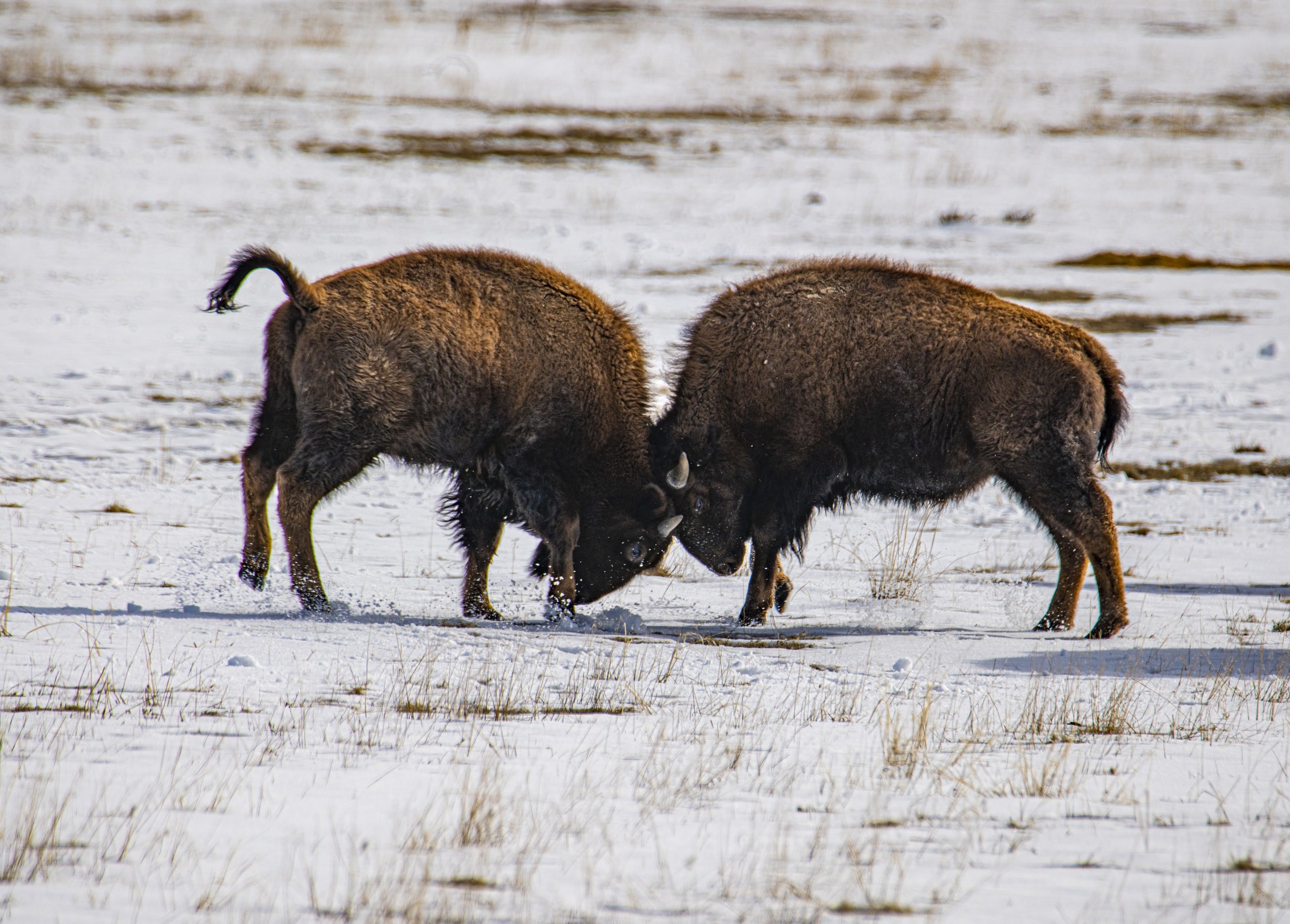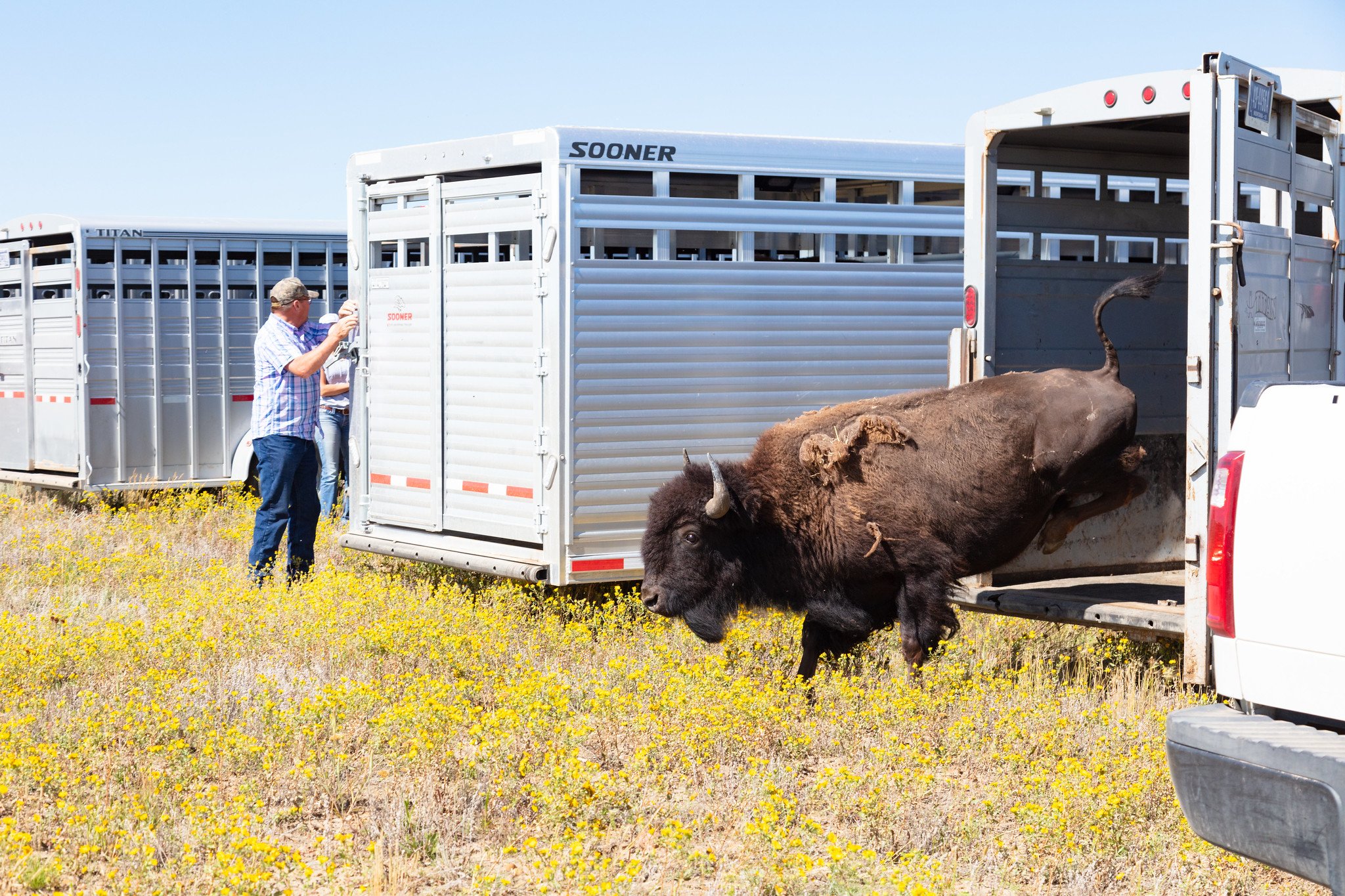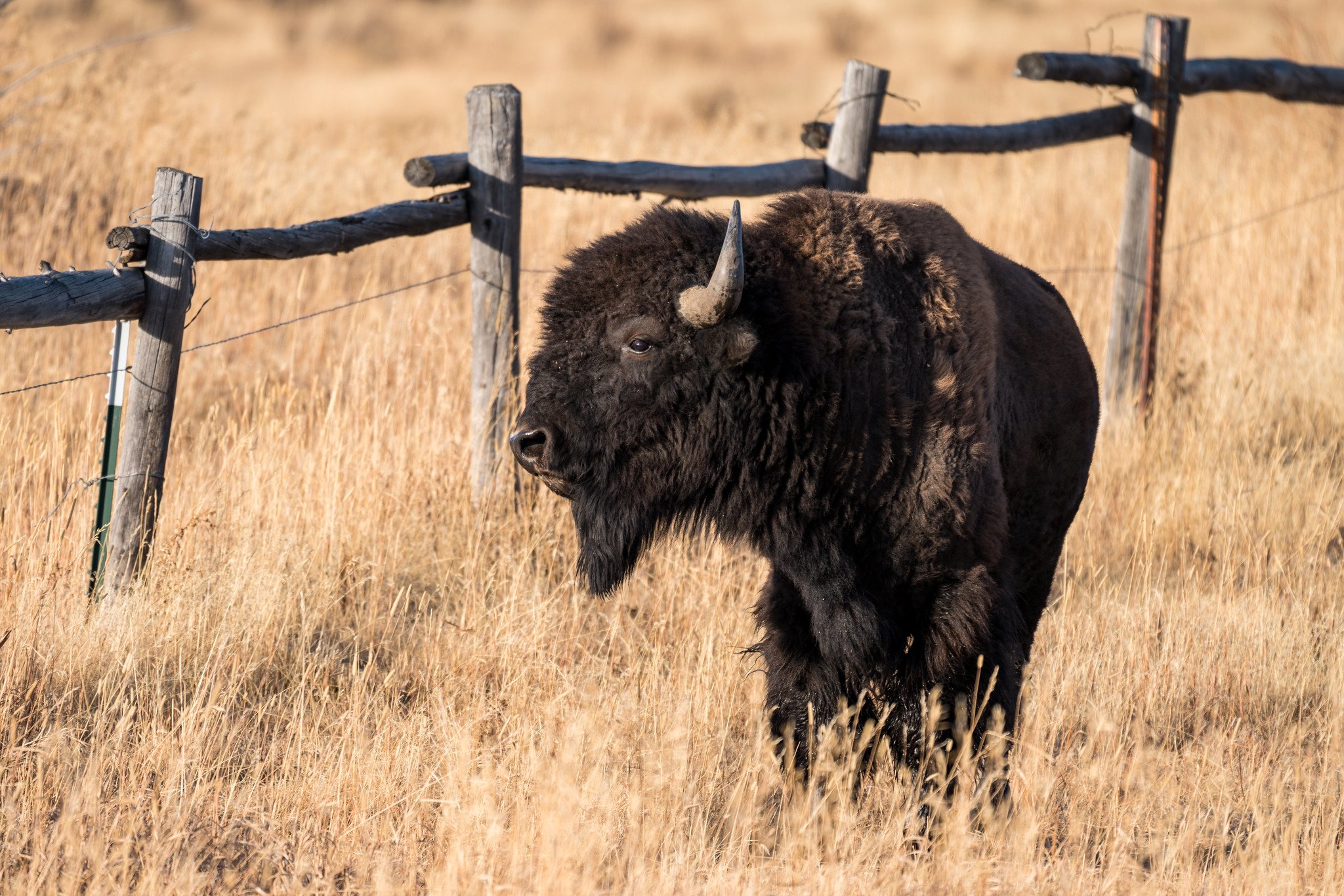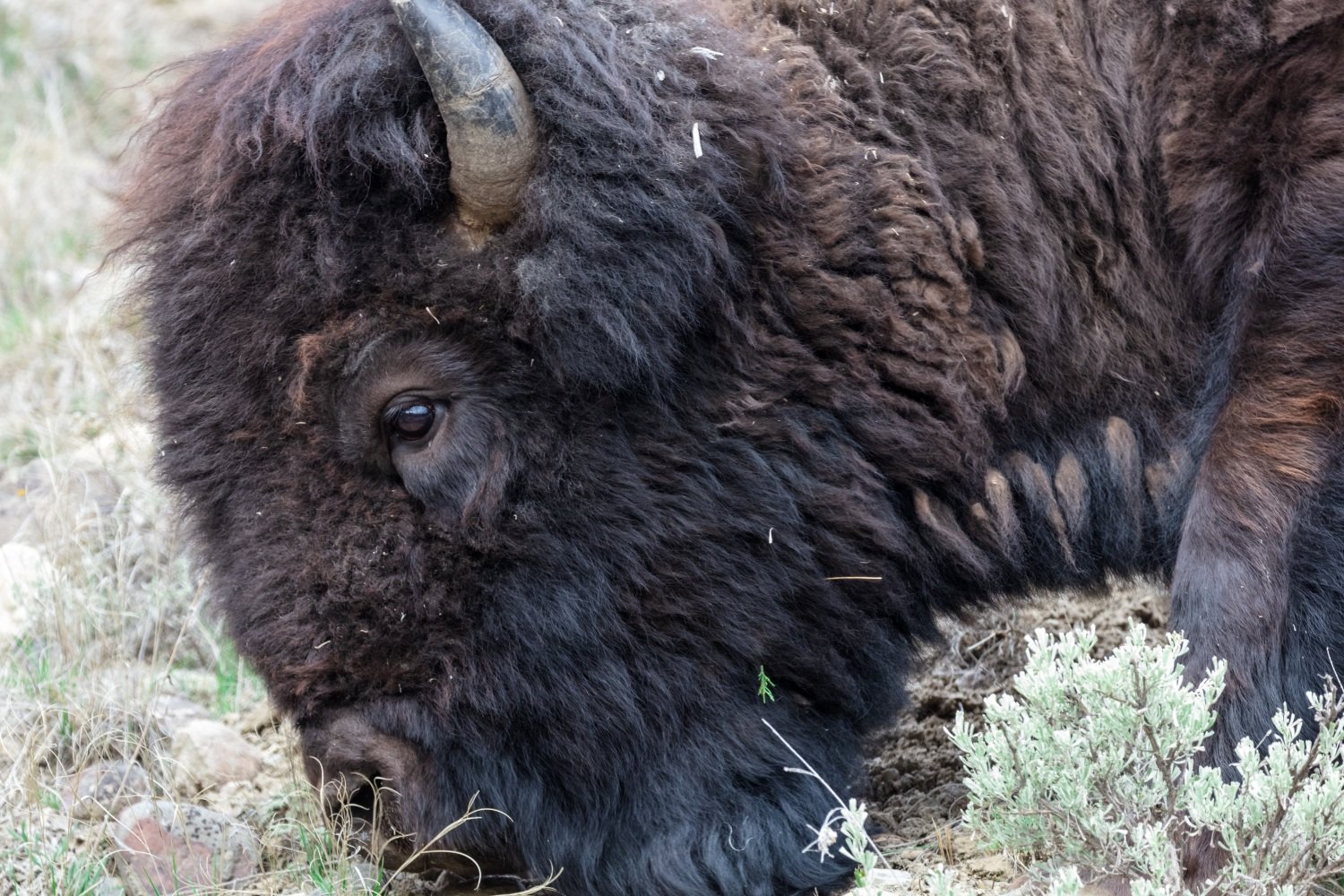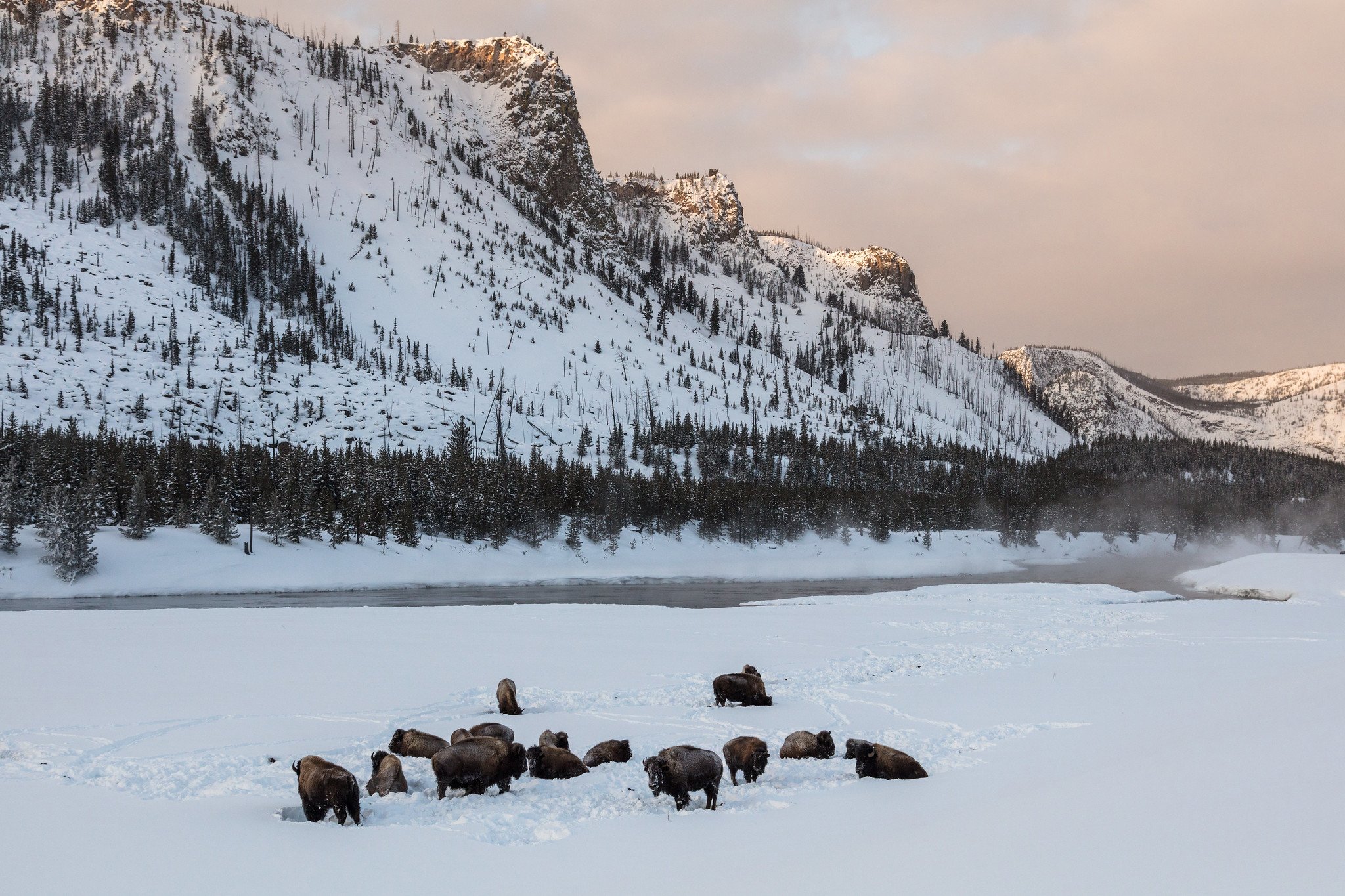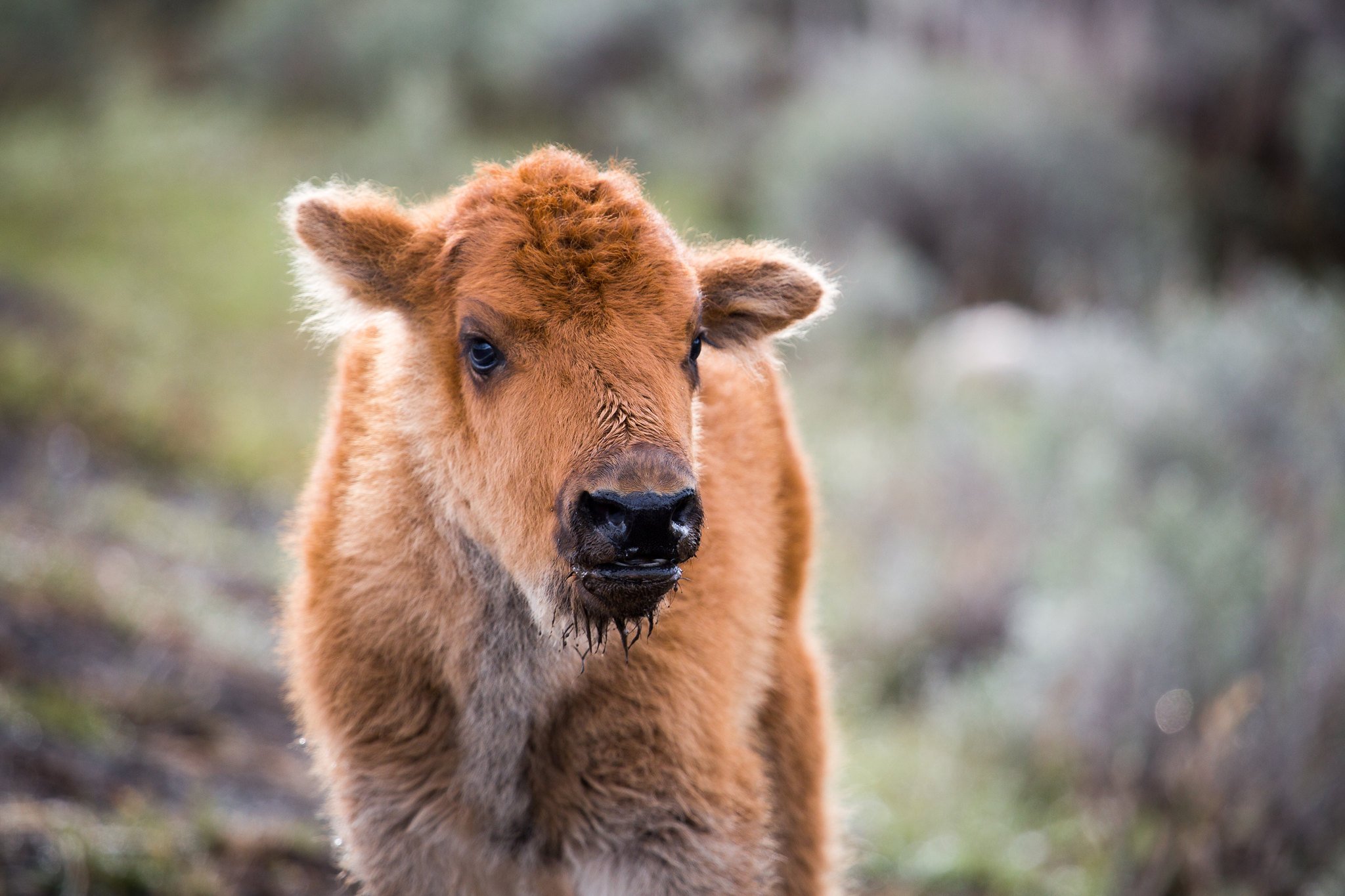
Protecting Bison
A Wild Icon
It is hard to overstate the importance of Yellowstone bison. Their unparalleled genetics, cultural significance, and ecological impact are among the many hallmarks of this remarkable species.
Yellowstone National Park is the only place in the world where wild American plains bison can be witnessed in large, free-roaming herds. But the fact that these bison exist at all is miraculous. The roughly 5,000 bison roaming the park today are descendants of just two dozen individuals that found a haven in Yellowstone’s rugged interior while European settlers and the American military systematically exterminated millions of bison through overhunting and an intentional act of war against the Tribes that depended on the species. The once vast herds that engineered the landscape of the American West and supported Native civilizations for millennia were nearly obliterated by the early 1900s.
Decades of hard work and commitment to conservation have slowly, steadily brought the species back from the brink of extinction and today a robust population of wild bison calls Yellowstone home.
Freedom to Roam
While the last few decades have been marked by a decidedly more positive trend in the story of the wild American plains bison, Yellowstone bison continue to face numerous barriers to more meaningful restoration.
Bison are naturally migratory; Yellowstone bison cross vast amounts of land and are instinctually driven to leave the harsh, high elevation plateau of the park in the winter and seek lower elevation habitat that is more conducive to calving and finding winter forage.
However, wild bison are largely not tolerated on the landscape outside the park. Unlike other native wildlife such as elk, moose, and pronghorn – which for the most part are able to follow natural movement and migration patterns across the ecosystem – the movements of bison are severely regulated and restricted by archaic wildlife laws, state politics, fears around disease transmission, competition for grass, and latent discomfort with bison as a symbol of Indigenous power.
Moving the Needle
For every barrier still faced by bison today, there are people hard at work on creative, innovative, and inclusive efforts to overcome roadblocks and help restore bison to their rightful place across the West.
At the Greater Yellowstone Coalition, we challenge the status quo with innovative partnerships, dedicated advocacy, and on-the-ground projects that make a difference for bison.
Our bison work includes:
Restoring Yellowstone bison to lands beyond the park
We are advocates for and investors in Yellowstone National Park’s Bison Conservation Transfer Program, which diverts disease-free bison from slaughter and distributes them to Tribal lands and appropriate public lands in order to restore bison to the landscape more broadly and honor the Indigenous connection with buffalo.
Building tolerance for wild bison on the landscape outside Yellowstone
We are a founding member of and now lead the Yellowstone Bison Coexistence Program, where alongside partners we build social tolerance for bison outside Yellowstone by providing financial and technical assistance to landowners in support of building bison-proof fencing and other protective infrastructure
Expanding Tribal buffalo herds
We are a founding member of the Water and Buffalo Alliance, which is a Wind River Indian Reservation-based coalition of Tribal agencies, Tribal councils, and nonprofit organizations working to advance conservation and protect the Indigenous way of life.
Bison policy and advocacy
We play a key role in advocating for good bison policy and fighting bad bison policy. We participate in administrative processes such as the revision of the Yellowstone Bison Management Plan, and keep our eye on the state legislatures of Montana, Idaho, and Wyoming for bills that impact bison.
Check out our blog for recent bison conservation news.
